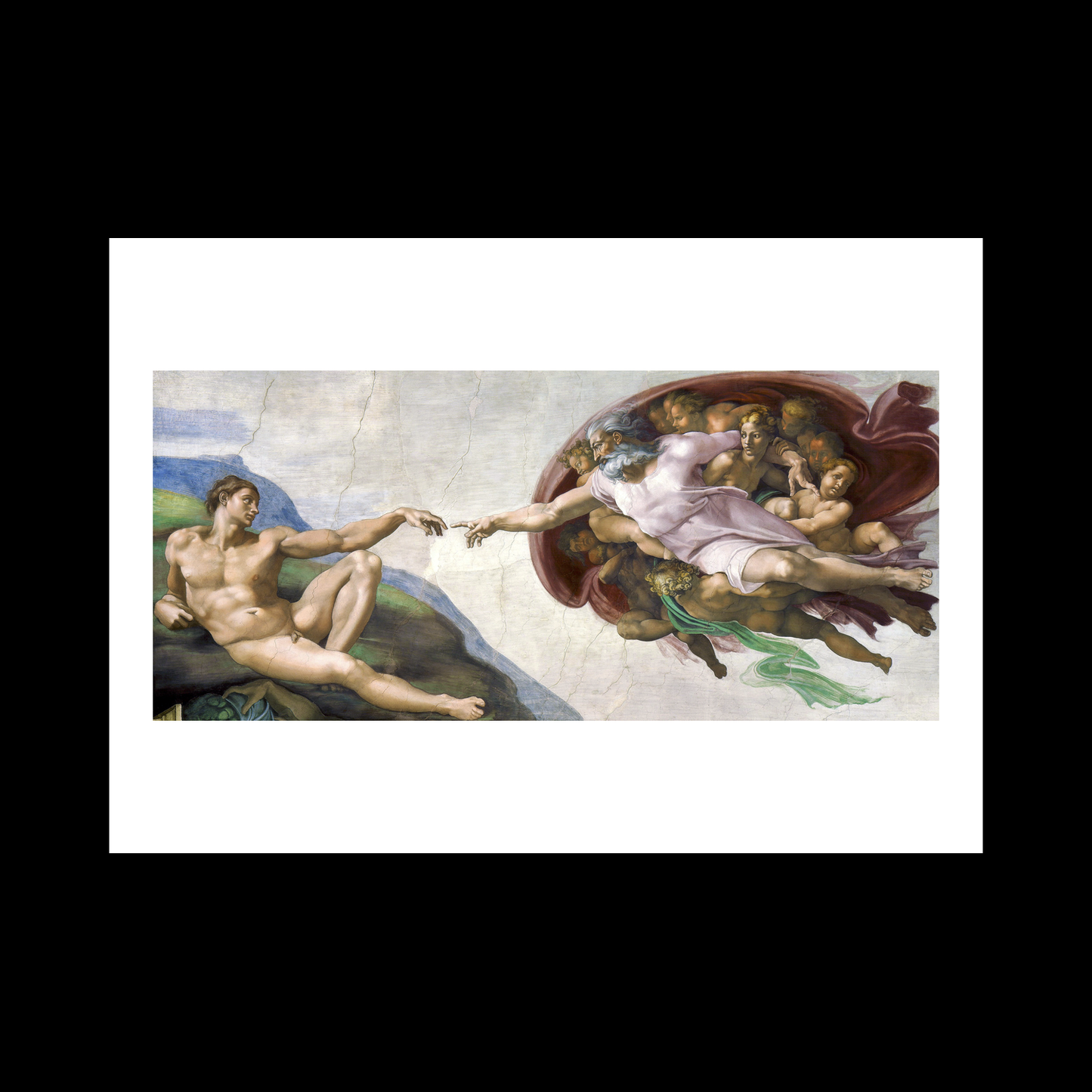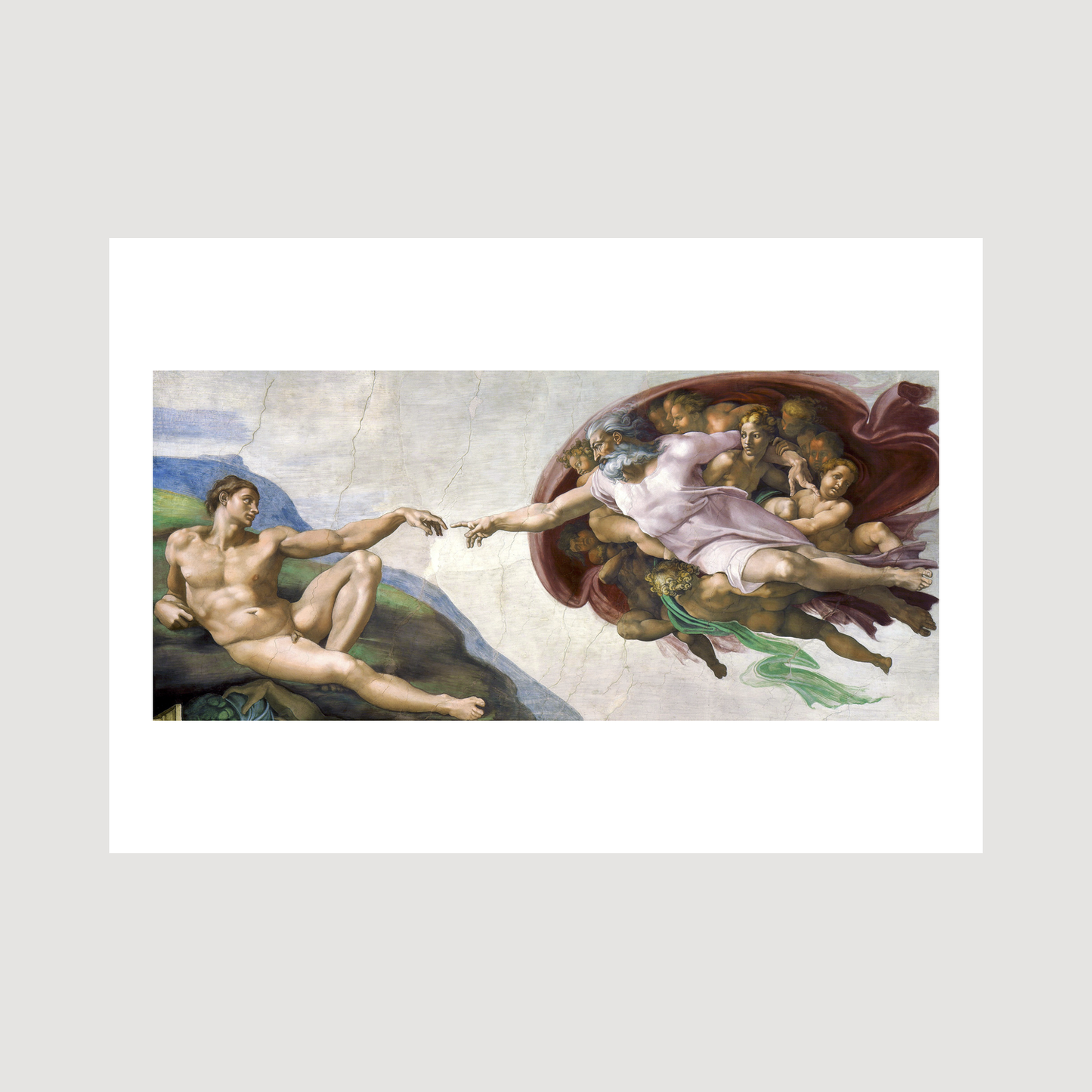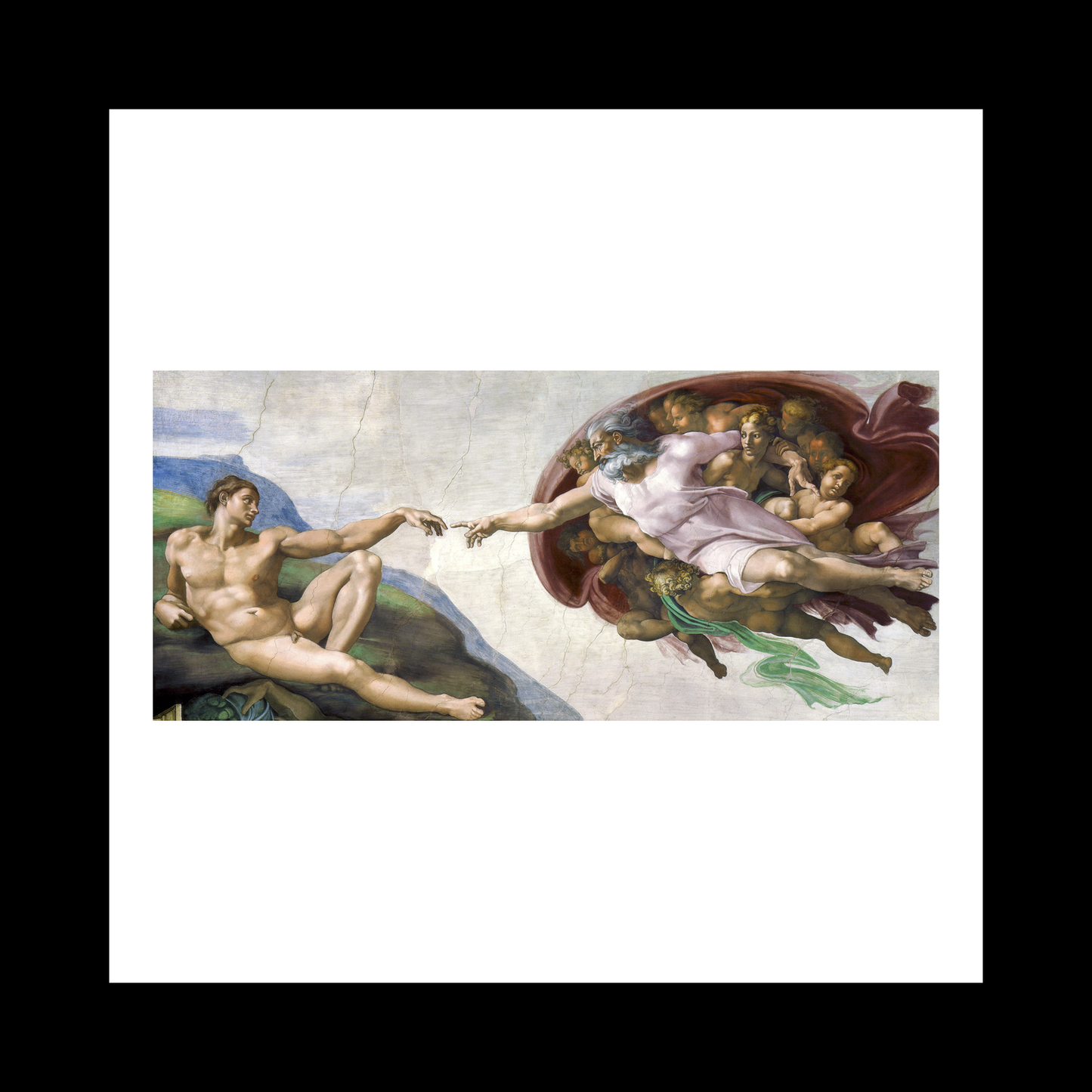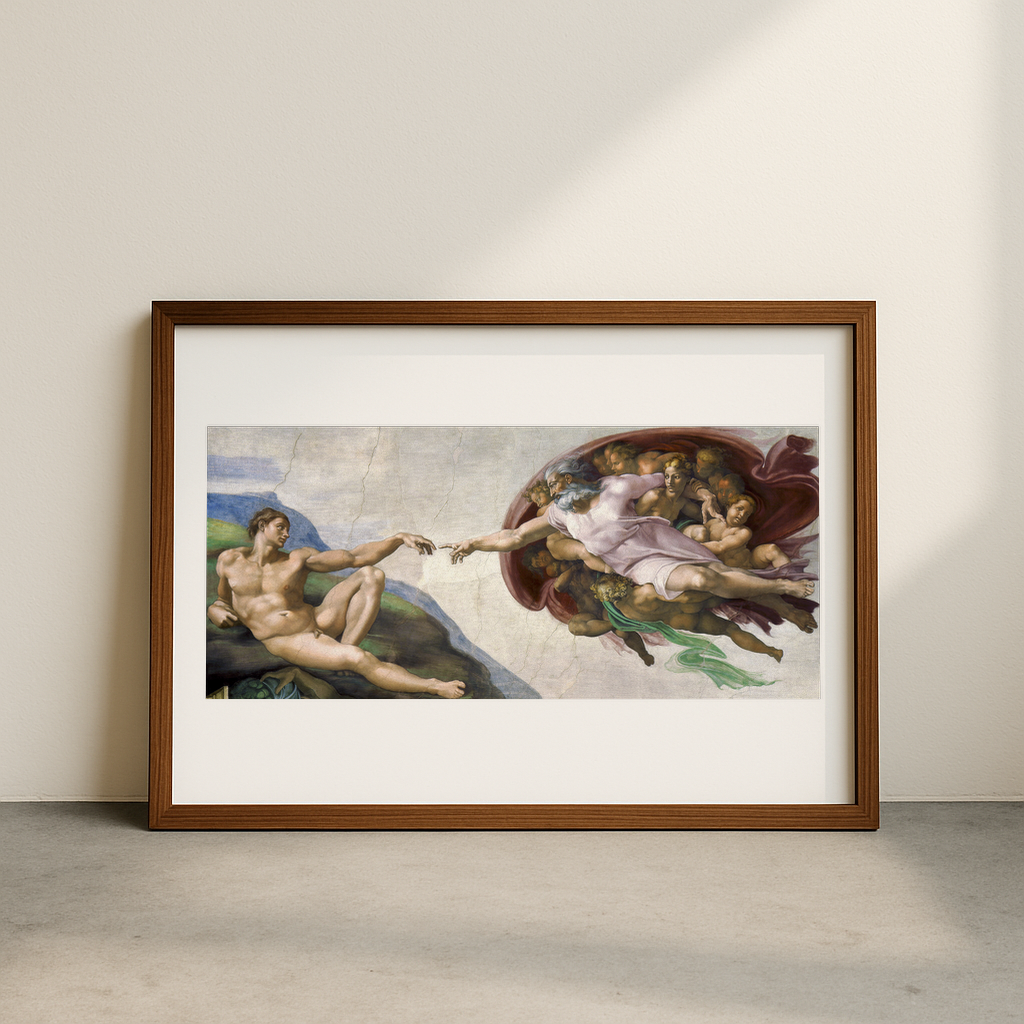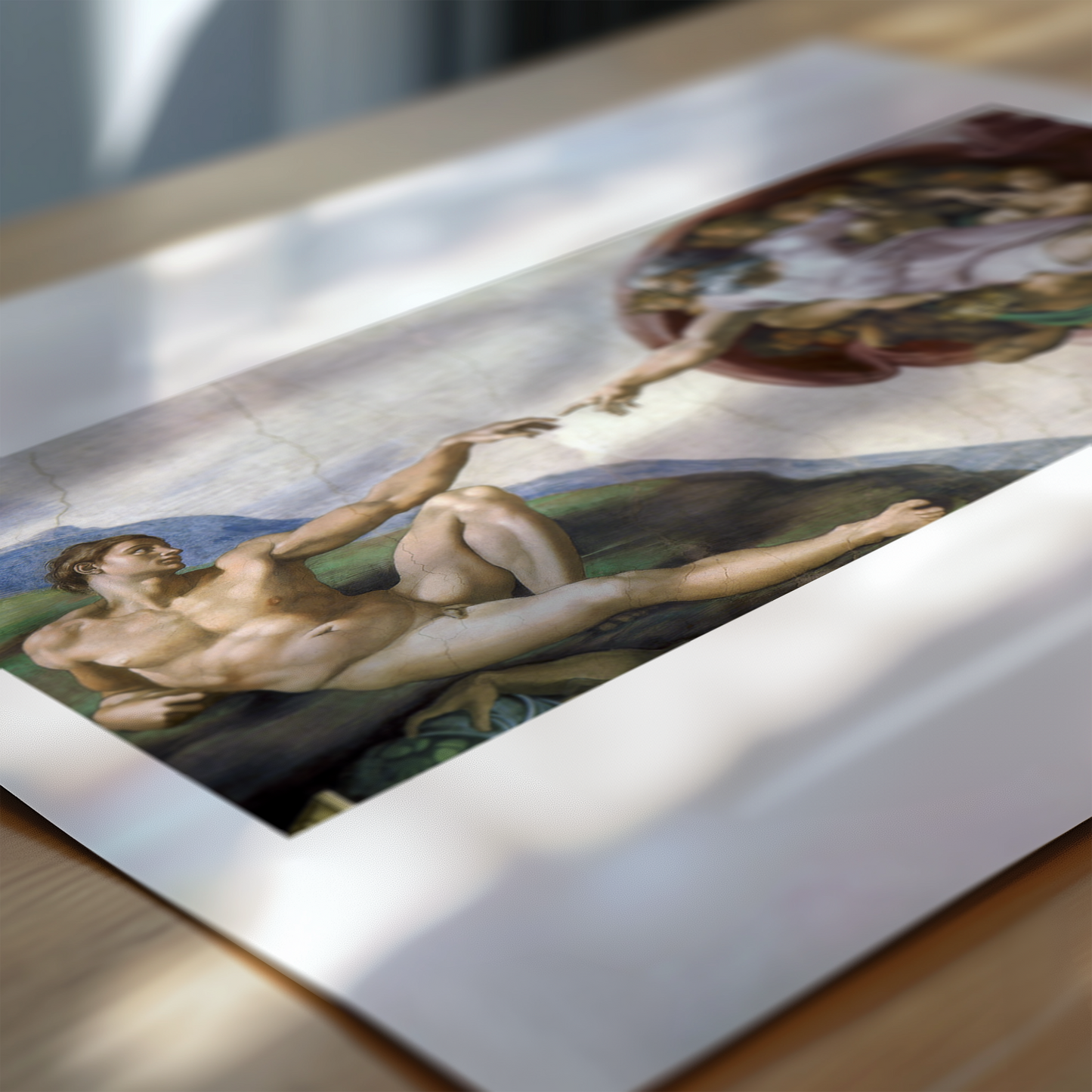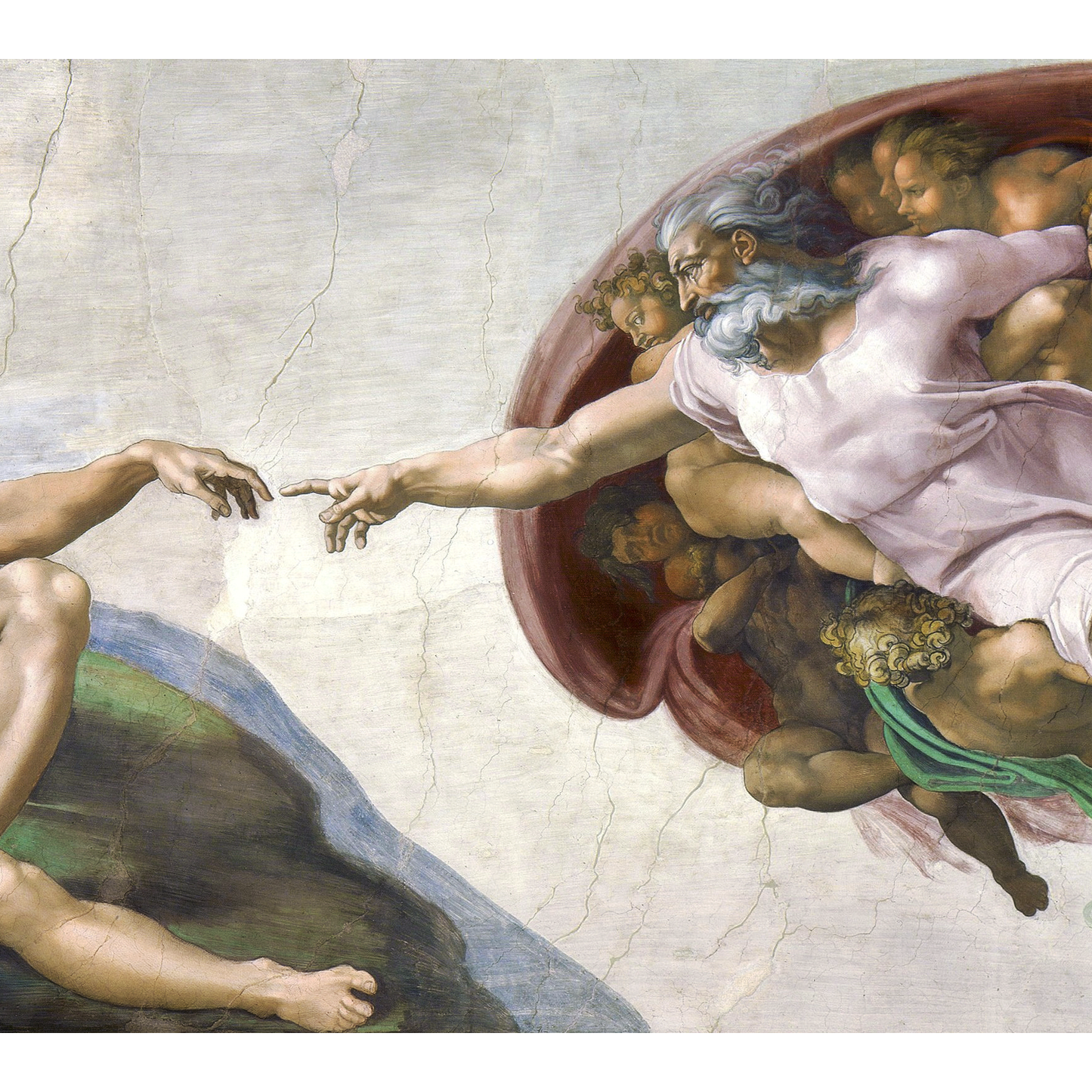1
/
of
6
The Creation of Adam
The Creation of Adam
Regular price
£12.45 GBP
Regular price
Sale price
£12.45 GBP
Taxes included.
Quantity
Couldn't load pickup availability
The Creation of Adam, painted by Michelangelo Buonarroti around 1511, stands as one of the most compelling scenes within the Sistine Chapel's ceiling frescoes. This remarkable composition depicts the precise moment of divine connection between God and Adam, captured through Michelangelo's masterful understanding of human anatomy and dramatic tension. The nearly-touching fingers of God and Adam create a powerful focal point, while the flowing robes and dynamic poses demonstrate the artist's exceptional skill in creating movement within a static medium.
Michelangelo's choice to portray God within a brain-shaped cloud of angels and drapery reveals his fascination with both religious symbolism and human anatomy. This dual interest stemmed from his controversial practice of dissecting corpses to study the human form, which he believed was essential to understanding God's creation. The artist spent four years painting the chapel's ceiling while standing on scaffolding, developing severe neck and back problems that affected him for the rest of his life.
The fresco showcases Michelangelo's revolutionary approach to religious art, humanising divine figures through naturalistic poses and emotional expressions. His technique involved applying paint to wet plaster, requiring swift execution and confident brushwork. The subtle colour palette, dominated by warm flesh tones and cool blues, creates a sense of depth and atmosphere. Interestingly, Michelangelo considered himself primarily a sculptor, viewing painting as a lesser art form, yet his reluctant acceptance of this commission resulted in one of history's most influential artworks, inspiring countless artists and thinkers across centuries.
View full details
Michelangelo's choice to portray God within a brain-shaped cloud of angels and drapery reveals his fascination with both religious symbolism and human anatomy. This dual interest stemmed from his controversial practice of dissecting corpses to study the human form, which he believed was essential to understanding God's creation. The artist spent four years painting the chapel's ceiling while standing on scaffolding, developing severe neck and back problems that affected him for the rest of his life.
The fresco showcases Michelangelo's revolutionary approach to religious art, humanising divine figures through naturalistic poses and emotional expressions. His technique involved applying paint to wet plaster, requiring swift execution and confident brushwork. The subtle colour palette, dominated by warm flesh tones and cool blues, creates a sense of depth and atmosphere. Interestingly, Michelangelo considered himself primarily a sculptor, viewing painting as a lesser art form, yet his reluctant acceptance of this commission resulted in one of history's most influential artworks, inspiring countless artists and thinkers across centuries.
